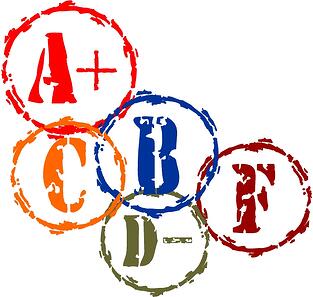
How do educators come to personally know, and intimately evaluate, their student’s work?
The answer, surprisingly, will influence an essential step in your recruitment process: sourcing. As a sourcer or recruiter doing candidate research to build your pipeline, you might want to borrow a page from an educator’s playbook: create well-defined and transparent evaluation standards.
This post is a quick outline on how to create a standardized rubric for “grading” and evaluating candidates. The hope is that this simple method will go a long way in helping you curate, assess, and share crucial details about the candidates you’ve interviewed.
Anyone who’s attended college remembers taking a general education course on rhetoric and composition. This class was the cornerstone for all the writing and research you’d be doing during your entire college career—regardless of your major. From the moment you started the class you knew your writing assignments would say a lot about you. And, at the end of the day, having your writing evaluated is a gut-wrenching experience.
A great English professor is transparent about the standards they expect. By creating an easily understandable grading rubric they can relieve student anxiety by giving them something memorable and intuitive to follow. More importantly, the rubric provides a solid framework for how the student’s work is ranked.
Ranking candidates is an essential task performed by a recruiters and sourcers. After looking at a sample of a rubric for grading essays—let’s create a sample of rubric that “grades” an imagined Software Engineer candidate. The idea is that you can create a clear and memorable framework for assessing candidates that’s easy to share, and recap during the decision-making process.
English Rubric
(A/A-)
Thesis: Easily identifiable, plausible, novel, sophisticated, insightful, crystal clear.
Structure: Inherent, evident, understandable, appropriate for thesis. Airtight transitions from point to point. Each paragraph possesses solid topic sentences.
Use of evidence: Sources used to buttress every point with at least one example. Excellent integration of quoted material into argument.
Analysis: Author coherently relates evidence to each component of the thesis; insight is novel and exciting, offering multiple new ways to think about the topics and the sources.
Logic and argumentation: Put simply, all ideas in the paper flow logically; the argument can be identified and understood as reasonable or sound. Counterarguments are employed to address lack of evidence, possible refutation and/or offer ways not to think about the topics.
Mechanics: Sentence structure, grammar, and diction excellent; largely correct use of punctuation and citation style; minimal to no spelling errors; no run-on sentences or awkward constructions; limited instances of the passive voice.
Prospective Candidate Rubric: Questions to ask
Job experience: What companies have they worked for? How long do they usually hold a given position? Do they continually grow, obtaining more specialized and senior job titles?
Education: Are they from a renowned school that produces highly successful students? Is their degree relative to the position?
Cultural fit potential: Based on their previous work experience, have they worked in cultural environments that are similar to what our company values and practices?
Social media presence/reputation: Are they active and valuable members of social media sites? What stands out most about their activities? Some key indicators to think about: are they thought leaders; owners of a high Klout score; do they have numerous repos and forks on Github; a solid StackExchange reputation?
Skill sets relevant to job: What skills sets have the highest value for the position I am looking to fill? What skills sets would their colleagues in the new position value most?
Cover letter/CV language mechanics: Recent studies show that typos and grammatical errors are important indicators of job performance. When you read their writing (whether on a LinkedIn profile or from the documents they provide you), go ahead and use the same metrics from above in the Rhetoric and Composition course.
Prospective Candidate Rubric: Example of an imaginary Software Engineer candidate Jane Doe
(A/A-)
Job experience: Senior Software Engineer at Google (3 years); Software Engineer at Google (2 year) Software Engineer Intern at Facebook (6 months).
Education: University of California, Berkeley, BA, Computer Science.
Cultural fit potential: Jane’s work experience with Google and Facebook makes her a strong fit at our company.
Social media presence/reputation: LinkedIn (212 connections); GitHub (21 followers; 7 original repos; 12 forks); Twitter (1K followers); Klout score: 62; StackExchange reputation (310).
Skill sets relevant to job: software engineering, Ruby, ruby on rails, Python, JavaScript, cloud computing, xml, linux.
Cover letter/CV language mechanics: Excellent written communication skills; she offers compelling narratives about her problem-solving and teamwork skills.
SUMMARY
Clearly a rubric for a B+/B/B- candidate might focus on the limitations of their job experience; their lack of increasing role or responsibility sophistication; questions and unknowns about their cultural fit potential; slightly lower social media presence and reputation scores; and smaller, or less relevant, skills sets etc.
How you define your grading rubric is up to you. The more you understand about the position you need to fill—and the workplace dynamics of the company—the more valuable your rubric will be.
Lastly, doing this high-level research can take a fair amount of time so we will let you in on a little secret: using Entelo Search means you can gain all of these important metrics with one fell swoop.

